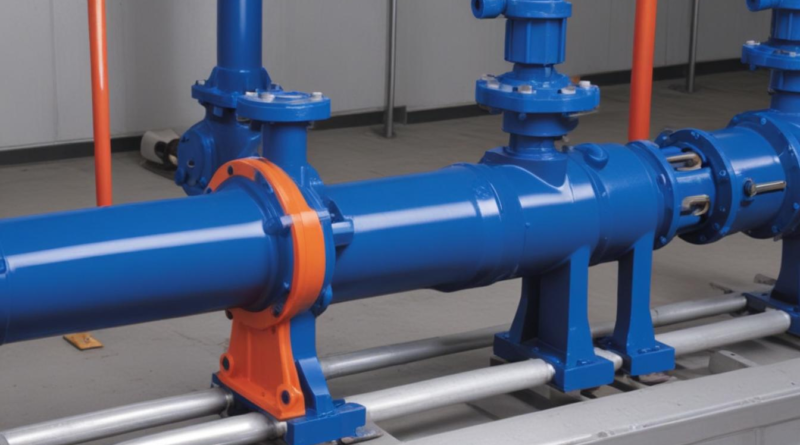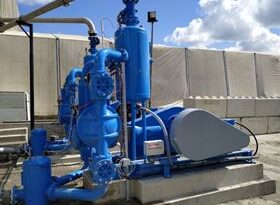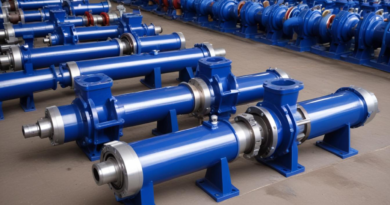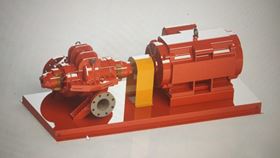Impact of temperature on progressive cavity pump performance
The performance of progressive cavity pumps is significantly influenced by temperature, which can alter the viscosity of the pumped fluid and affect the overall efficiency of the system. As temperature fluctuates, the rheological properties of the fluid change, impacting the pump’s volumetric efficiency and flow rate. In practical terms, lower temperatures tend to increase fluid viscosity, causing greater resistance to flow and impacting the performance impact of the pump. Conversely, higher temperatures usually decrease viscosity, which can enhance pump efficiency but may also lead to issues such as increased wear on pump components due to reduced lubrication.
- Increased viscosity: At lower temperatures, progressive cavity pumps may require more power to maintain flow rates, leading to higher operational costs and potential overload conditions.
- Decreased viscosity: At elevated temperatures, while the pump can operate more efficiently, there is a risk of cavitation and other operational challenges that can compromise pump longevity.
These variations necessitate careful consideration during the design and selection of progressive cavity pumps for specific applications. Understanding the temperature range of fluids being pumped is critical for optimizing performance and ensuring reliability. Engineers must also evaluate the impact of temperature on component materials, as incompatible materials might degrade under extreme temperature conditions, leading to mechanical failures. This assessment is essential for prolonging the operational lifespan of the pump and maintaining its efficiency.
Effects of temperature variations on pump efficiency
Temperature variations can have profound effects on the efficiency of progressive cavity pumps, primarily through their influence on the viscosity of the fluids being transported. As temperature rises or falls, the path that the fluid takes through the pump can become significantly altered, affecting the overall performance impact of the system.
To better analyze the effects of temperature on pump efficiency, it is important to consider a range of scenarios:
- Low Temperature Conditions: In low-temperature environments, the viscosity of the fluid increases, which results in several operational challenges:
- The pump may require additional energy to overcome the higher viscosity, leading to increased power consumption.
- Higher viscosity can cause reduced flow rates, as the pump struggles to move the thicker fluid through its chambers.
- Potential for cavitation can increase, particularly if the pump is not adequately designed to handle the resulting pressure changes.
- High Temperature Conditions: Elevated temperatures decrease fluid viscosity, presenting both benefits and challenges:
- The pump may operate more efficiently due to the reduced resistance to flow, enhancing volumetric efficiency.
- However, low viscosity can lead to reduced lubrication between moving parts, potentially increasing wear rates and accelerating mechanical failure.
- There is an increased risk of vaporization of light components in the fluid, contributing to issues like cavitation and loss of prime.
Efficiency losses can also be exacerbated if the pump is operating outside its specified temperature range. Engineers need to ensure that the materials used in the construction of the pump—such as elastomers and metals—are resistant to degradation and maintain their structural integrity under varying temperature conditions. The consequence of ignoring these factors can lead to reduced pump lifecycle and unexpected maintenance schedules.
Ultimately, the efficiency of progressive cavity pumps in relation to temperature fluctuations underscores the importance of comprehensive analysis during the selection and application process. By establishing a thorough understanding of the fluid properties and expected operating environments, engineers can better anticipate the performance impact associated with temperature variations, leading to more reliable and efficient pump operation.
Material selection for temperature resilience
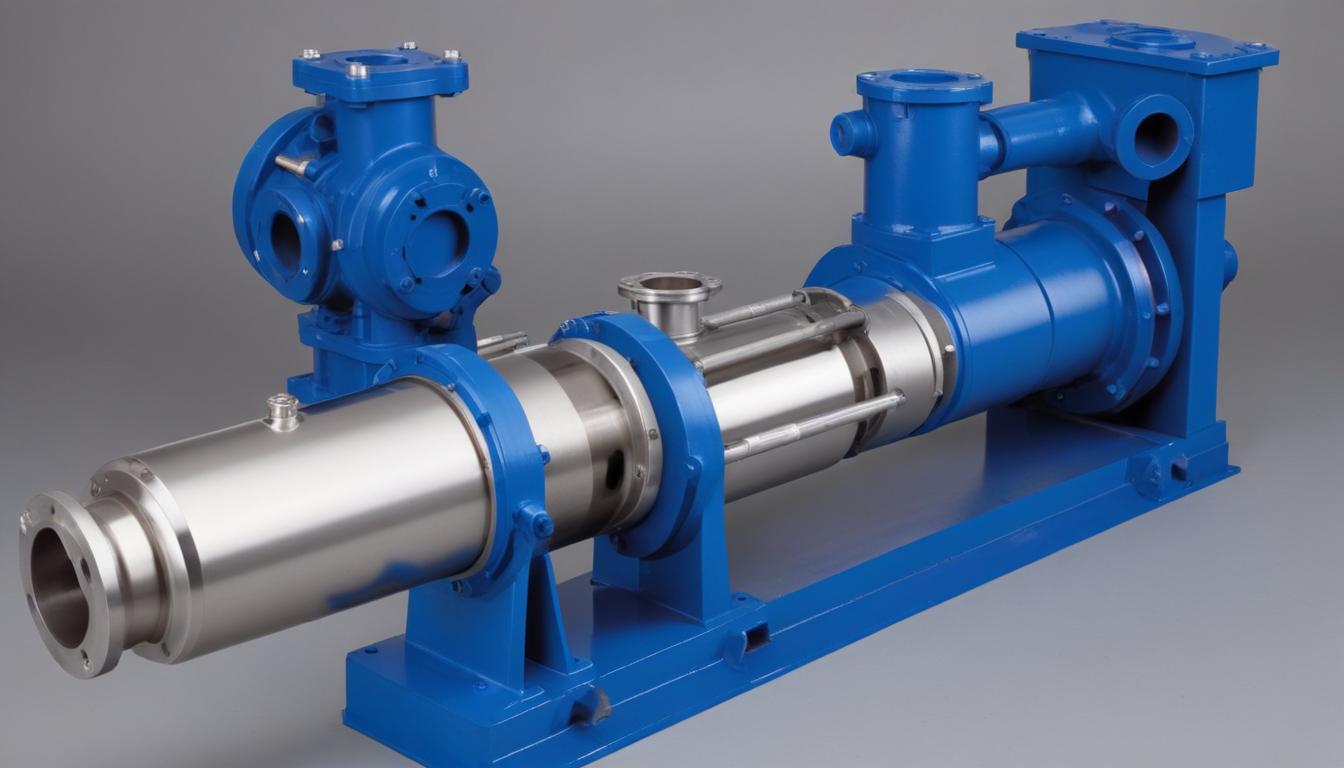
When selecting materials for progressive cavity pumps tasked with handling fluids across a range of temperatures, it is vital to consider both the mechanical properties and the thermal stability of those materials. The ideal materials must withstand the specific thermal conditions without compromising the pump’s performance impact or lifespan. Various factors influence material selection, including tensile strength, thermal expansion, and resistance to thermal degradation.
Factors to consider for material resilience in the context of temperature:
- Thermal Conductivity: Materials with high thermal conductivity can efficiently dissipate heat, reducing the risk of localized overheating that may lead to failure.
- Thermal Expansion: Different materials expand at varying rates with temperature changes. Using materials that have compatible coefficients of thermal expansion helps minimize internal stresses that can arise from temperature fluctuations.
- Corrosion Resistance: Elevated temperatures can accelerate corrosion, especially in aggressive fluids. Selecting materials with inherent resistance to corrosion ensures the longevity of the pump.
- Fatigue Resistance: Repeated temperature cycling can lead to fatigue in materials. Components subject to dynamic loading must therefore be manufactured from materials with high fatigue resistance.
A common material used in the construction of progressive cavity pumps is stainless steel, which offers excellent mechanical properties and corrosion resistance across various temperatures. However, for applications involving extreme thermal conditions, materials like Inconel or other high-performance alloys may be necessary due to their superior strength retention at elevated temperatures.
In addition, the choice of elastomers for stator lining is crucial, as these materials are often significantly affected by temperature. TPR (Thermoplastic Rubber) materials are frequently used for applications that require good elasticity and abrasion resistance while maintaining stability across a wide temperature spectrum. For extreme temperatures, specially formulated elastomers with high-temperature resistance properties are necessary to prevent deterioration and ensure leak-proof sealing.
Table 1 summarizes common materials used in progressive cavity pumps, highlighting their temperature limits and resistance characteristics:
| Material | Temperature Range (°F) | Corrosion Resistance | Typical Applications |
|---|---|---|---|
| Stainless Steel | -320 to 1,200 | Good | Water, wastewater, food processing |
| Inconel | -400 to 2,000 | Excellent | Aerospace, chemical processing |
| TPR (Thermoplastic Rubber) | -40 to 250 | Fair | General-purpose, low-temperature applications |
| High-temperature elastomers | -40 to 400 | Varies | Oil & gas, high-temperature fluids |
In summary, the material selection process is a critical component of ensuring temperature resilience in progressive cavity pumps. Engineers must carefully evaluate durability in relation to the specific temperature profiles expected in operation. By selecting the appropriate materials, pump users can prevent premature failure and optimize both operational efficiency and maintenance strategies.
Performance characteristics across temperature ranges
The performance characteristics of progressive cavity pumps are heavily influenced by the surrounding temperature and its variation across different applications. Understanding these performance characteristics is critical for engineers and users to ensure optimal functionality and longevity of the pumps under diverse thermal conditions. As temperature shifts, various aspects of pump performance come into play, particularly the volumetric flow rates, pressure levels, and overall efficiency.
In assessing the impact of temperature on performance, it is important to categorize the operational spectrum into low, moderate, and high temperature ranges:
- Low Temperature Performance: At temperatures below the specified operational range, progressive cavity pumps can experience significant increases in fluid viscosity. Key performance aspects include:
- Reduced flow rates due to increased viscosity, which can hinder the fluid’s movement through the pump’s rotor and stator.
- Elevated power requirements by the motor, as more energy is needed to overcome the pump’s internal friction and viscosity resistance.
- Potential for cavitation issues resulting from increased pressure drops, leading to increased wear or damage to the pump components.
- Moderate Temperature Performance: Within an optimal temperature range, progressive cavity pumps can achieve high efficiency and reliability. Performance characteristics witnessed in this range include:
- Stable flow rates and improved volumetric efficiency, as fluid viscosity is within a manageable range.
- Reduced energy consumption as the motor operates efficiently without excessive load conditions.
- Lower wear rates of internal parts due to stable lubrication properties, prolonging equipment lifespan.
- High Temperature Performance: Elevated temperatures introduce a series of operational challenges that may affect pump performance. These include:
- Decreased fluid viscosity can enhance flow rates but increase the risk of cavitation due to pressure fluctuations.
- Concerns over thermal degradation of elastomers and other materials, which may lead to seal failures and leaks.
- Potential overheating of pump components, possibly requiring advanced cooling or thermal management solutions.
Table 1 illustrates the general performance expectations associated with varying temperature conditions:
| Temperature Range | Performance Impact | Considerations |
|---|---|---|
| Below 32°F | Increased viscosity, reduced flow | Monitor power consumption, cavitation risk |
| 32°F to 150°F | Optimal efficiency and flow rates | Regular maintenance to ensure performance |
| Above 150°F | Risk of cavitation, wear due to thermal degradation | Assess material compatibility, consider cooling systems |
The understanding of how temperature influences the performance impact on progressive cavity pumps is pivotal for effective engineering design and operational management. By closely monitoring and adjusting to the surrounding temperature conditions, engineers can enhance the reliability and efficiency of their systems, reducing downtime and maintenance costs.
Thermal management strategies for pumps
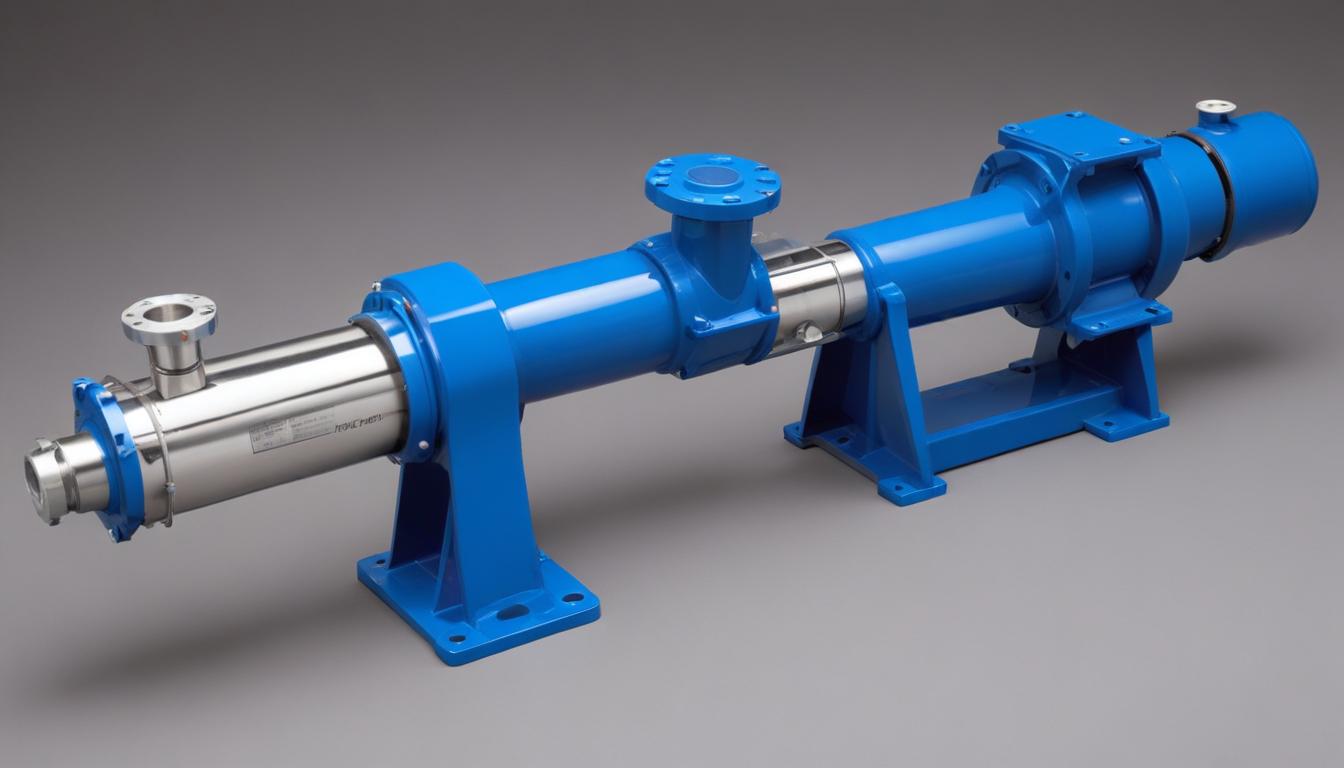
Effective thermal management strategies are essential for maintaining the operational efficiency and longevity of progressive cavity pumps in the face of temperature fluctuations. Engineers must implement a range of techniques to mitigate the adverse effects that temperature variations can have on pump performance impact, ensuring reliable and efficient operation across diverse applications.
Several key thermal management approaches can be utilized:
- Insulation: Applying insulation to pump housings and piping can significantly reduce heat loss or gain, stabilizing operational temperatures. Insulated systems maintain a consistent fluid temperature, minimizing viscosity changes that can hinder pump performance.
- Cooling Systems: For applications at elevated temperatures, integrating active cooling systems—such as chillers or heat exchangers—can effectively lower the fluid temperature before it enters the pump. This ensures that the fluid maintains an optimal viscosity, enhancing flow rates and minimizing wear on pump components.
- Heating Elements: In scenarios where low temperatures are a concern, incorporating heating elements or trace heating can pre-warm the fluid before pumping. This reduces viscosity and enhances flow characteristics, allowing pumps to operate more efficiently in colder conditions.
- Temperature Monitoring: Implementing real-time temperature monitoring systems provides continuous data on fluid and pump component temperatures. This allows for immediate adjustments to be made as needed, preventing overheating or other temperature-related issues that could impact performance.
- Thermal Expansion Considerations: Designing pumps with thermal expansion in mind can help accommodate changes in fluid volume and pump components. This can include using expansion joints or flexible connectors to allow for movement without compromising the integrity of seals or connections.
Moreover, strategic scheduling of maintenance and inspections during temperature extremes can prevent unforeseen pump failures. Identifying and addressing temperature-related performance concerns early on can lead to improved pump efficiency and reduced downtime. By employing a comprehensive thermal management strategy, users of progressive cavity pumps can ensure that their systems operate within the desired performance impact parameters, thus extending service life and enhancing overall operational reliability.
Case studies and real-world applications
In the practical application of progressive cavity pumps, real-world case studies highlight the critical role of temperature management in sustaining operational efficiency. Various industries, including wastewater treatment, food processing, and oil and gas, have encountered specific challenges related to temperature variations affecting pump performance. Examining these examples provides valuable insights into how temperature impacts performance and operational longevity.
One noteworthy case involved a wastewater treatment facility that experienced significantly decreased pump efficiency during winter months. The inlet temperature dropped below 32°F, causing the influent fluid’s viscosity to increase substantially. Consequently, the progressive cavity pumps struggled to maintain flow rates, leading to higher energy consumption and increased wear on the pump components. Engineers responded by implementing a heating system to maintain the influent temperature within a more favorable range, thereby restoring optimal performance levels and reducing operational costs.
Another example comes from the food processing industry, where a plant faced issues with a progressive cavity pump that transported high-viscosity substances at varying temperatures. During routine operation, fluctuations in inlet temperature created significant performance inconsistencies, resulting in periodic shutdowns due to cavitation and component fatigue. To address this, the plant management opted for advanced thermal insulation methods and temperature monitoring technology. These strategies successfully stabilized fluid temperatures, ensuring the pump operated steadily and efficiently, which in turn minimized downtime and enhanced product throughput.
A case in the oil and gas sector highlighted the challenges associated with high-temperature fluids. One offshore facility experienced mechanical failures in progressive cavity pumps because the fluids being extracted reached temperatures exceeding 180°F. As the temperature increased, the viscosity decreased, leading to issues such as cavitation and the degradation of seal materials. By upgrading to high-performance elastomers and implementing better thermal management practices, including cooling jackets for the pumps, the facility improved operational reliability and significantly extended the pump life cycle.
These case studies underline the significance of understanding the relationship between temperature and pump performance impact. By integrating appropriate thermal management strategies and materials that can withstand the operational temperature extremes, industries can optimize the performance of their progressive cavity pumps, thereby enhancing efficiency and reducing maintenance costs. Success in these applications relies heavily on the ability of engineers to anticipate temperature-related challenges and implement innovative solutions to mitigate risks effectively.

